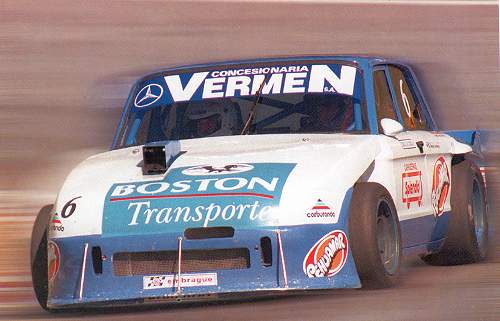The easiest way to see this is using equations.
 / Tw)
Increasing track width does not increase grip or lateral force, but decreases lateral weight transference.
Decreasing lateral weight transference:

you improve lateral force coefficient (see the 900lb curve peak is higher than the 1800lb one). That means that the
outer wheel will loose some grip but the inner one will gain more than what the outer losses and thus overall (inner+outer) grip increases.
This is why you will always prefer max track width permited by the rules and do not use it to tune the vehicle (as Jersey Tom pointed out) UNLESS (sory for shouting) your car lacks suspension (kart case) or your stock car lacks aerodynamic treatment so that wheels disturbs airflow and in very fast circuits aero turns more important that lateral weight transference and Im sure there are other cases.
 Early 90s TC:
Early 90s TC: note how the wheels where compared to the front
 2009 TC:
2009 TC: wider and modeled front with lateral protections to increase safety in case of lateral impacts
EDIT: OOT for sure our aero mates will explain us all about that steped rear spoiler we can see in the green Ford in this
thread .
"You need great passion, because everything you do with great pleasure, you do well." -Juan Manuel Fangio
"I have no idols. I admire work, dedication and competence." -Ayrton Senna


